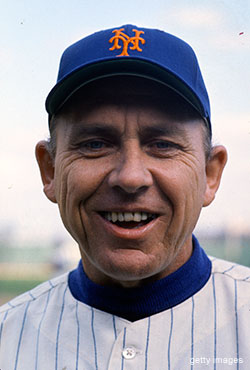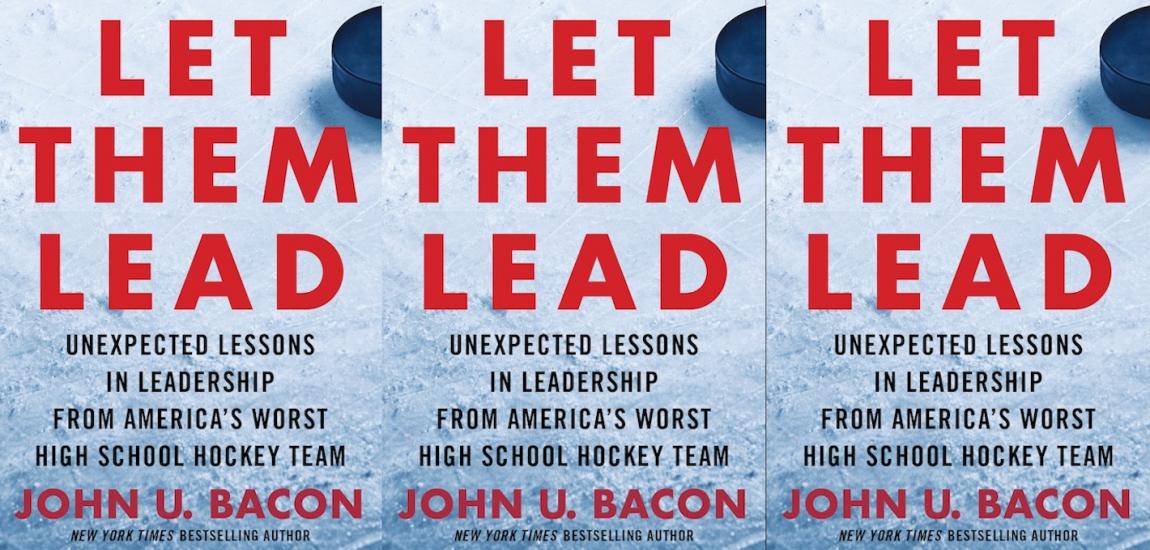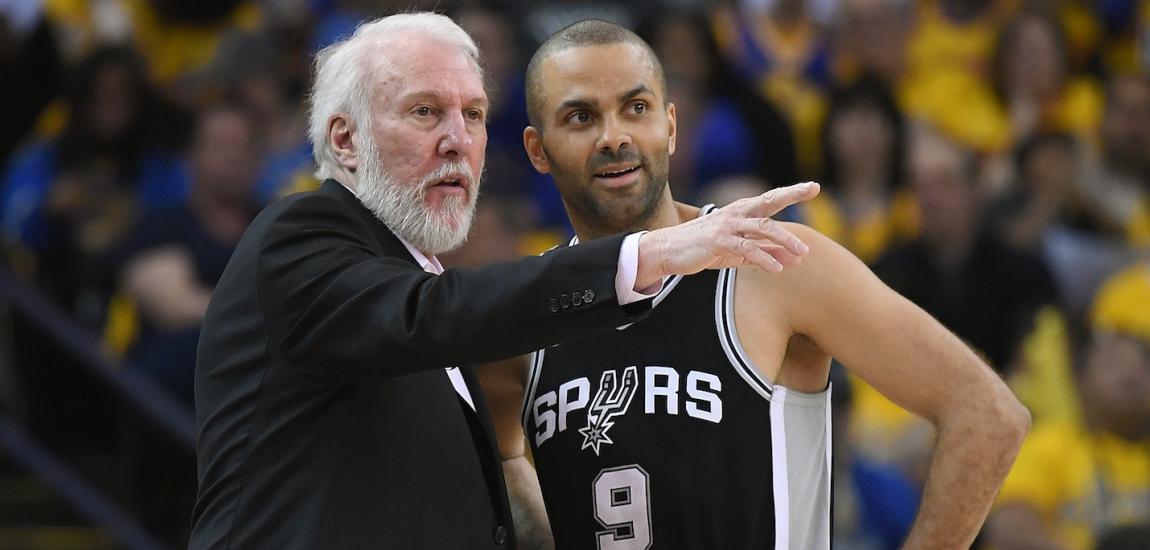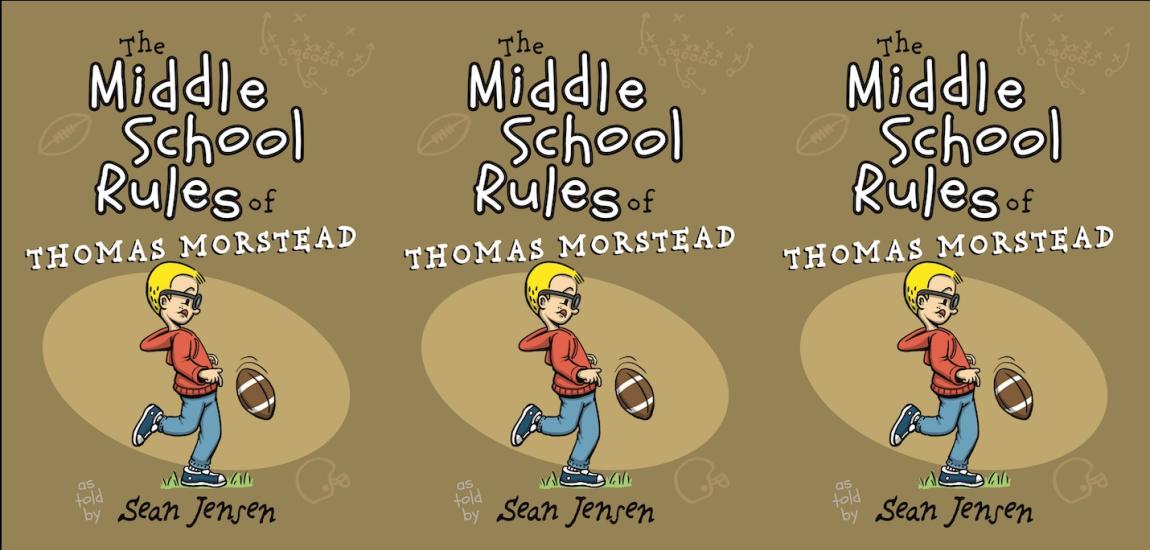A New York City icon and, with the Brooklyn Dodgers, one of the finest first basemen of all time, Gil Hodges (1924-1972) managed the Washington Senators and later the New York Mets, leading the 1969 "Miracle Mets" to a World Series championship. Hodges was a witty man with a dry sense of humor, and his dignity and humble sacrifice sometimes masked a temper that made Joe Torre refer to him as the "Quiet Inferno." In Gil Hodges: A Hall of Fame Life, author Mort Zachter examines Hodges' playing and managing days. But perhaps more importantly, Zachter unearths his true heroism by emphasizing the impact that Hodges' humanity had on those around him on a daily basis.
No man lives his image.
Gil Hodges stepped out of the Mets' dugout holding a shoe-polish-stained baseball in his right hand.
It was a chilly October afternoon in New York and the Mets manager wore a dark-blue baseball jacket over his uniform. Although the familiar No. 14 that had been stitched onto his jersey ever since his playing days in Ebbets Field wasn't visible to the standing-room-only crowd at Shea Stadium watching the fifth game of the 1969 World Series, it made no difference. If, like Neil Armstrong, who that past July took "one small step for man, one giant leap for mankind," Hodges had been wearing a NASA space suit complete with helmet and darkened visor, the fans would've still recognized him.
He had been, wrote Roger Angell, "perhaps the most popular ballplayer in the major leagues," and although Ebbets Field had crumbled beneath an iron wrecking ball almost a decade before, whenever Hodges stepped onto a baseball field he fortified fading memories of warm summer days when Brooklyn was the best the National League had to offer and no one had yet heard of the New York Metropolitans.

Hodges headed toward home plate slowly in that funny, pigeon-toed walk he had -- ramrod-straight like John Wayne in The Searchers -- but with surprisingly small strides for a man who stood almost six feet two inches tall. His toes touched the ground first, then his instep, and finally the heel of his spikes. A little over a year after surviving his first heart attack, Hodges looked much older than forty-five. Yet, there was still a grace and athleticism in his bearing that exuded a sense of confidence and power.
The Mets were playing in what would turn out to be the final game of the Series. But despite the tension of managing in baseball's ultimate pressure cooker, Hodges appeared no different than usual. "When everyone else got excited ... Gil remained calm," recalled his best player, Tom Seaver. "The tenser the situation, the more he concentrated. He never wavered, never came within a mile of panic, always observing, always maneuvering, always thinking."
"He had cold water running in his veins," said Mets catcher J. C. Martin.
That morning, Hodges had driven to Shea with his older brother, Bob. Throughout the car ride, Gil never mentioned the game -- not once. To Bob, his kid brother seemed so at ease on the ride up the Grand Central it felt as if they were heading out to play eighteen holes of golf. Decades later, their sister, Marjorie, told me it must have been a very long car ride for the outgoing and personable Bob, who would have loved discussing that afternoon's game.
Gil's silence didn't surprise her a bit. The defining experience of his formative years, surviving the savagery of Okinawa during World War II, had only deepened an inborn solemnity. The defining experience of his final years, that afternoon stroll to home plate was the high point of his professional baseball career. Yet, to him, it wasn't life and death, just a ball game. To a deeply religious man like Gil Hodges, there were more important things.

He wore a wedding band on the ring finger of his left hand. And the cross hanging from a thin chain around his neck not only was tiny but -- unlike later generations of athletes -- was tucked beneath his uniform. On the ring finger of his right hand was a 1955 World Series ring -- the only championship the Brooklyn Dodgers ever won. The two rings, and the cross, symbolized the three things that meant the most to Hodges: family, God, and work -- in that order. And if ever there was a man who could keep his priorities straight, it was Gil Hodges.
On this particular day, he slowed his pace to give himself time to think about the situation. That was what he did best. From the time he started to play baseball as a boy on Jim Higgins's farm in Petersburg, Indiana, Hodges had shown a knack for determining exactly what had to be done to win. So by the time he reached home plate, his piercing blue eyes locked and loaded, Hodges had the big picture sized up just right.
He considered the Mets' opponent: the Baltimore Orioles, heavy favorites to win the World Series. The Orioles had won 109 games that season -- the most in the Majors. Baltimore had won the 1966 Series (and would win another in 1970) with the same core group of players that took the field that afternoon. They had two first-ballot Hall of Fame players in their everyday lineup: out- fielder Frank Robinson, who finished his career with 586 home runs, in an era when hitting 500 or more home runs didn't require a visit before Congress to explain that you hadn't used steroids; and clutch-hitting Brooks Robinson, who set the gold standard for fielding for all subsequent generations of third basemen. In addition to the Robinsons, the slugging first baseman Boog Powell, the feisty second baseman Davey Johnson, and the ever-so-smooth center fielder Paul Blair had all been named to the 1969 All-Star team.
Compared to Earl Weaver, the Baltimore manager, Hodges had slim pickings. The Mets' lineup consisted largely of journeymen Hodges had platooned depending on whether they were facing a right- or a left-handed pitcher. That not only maximized his team's limited hitting skills but also kept them fresh for the stretch-run in September.

The Mets' rival for the National League East title that season, the Chicago Cubs, was led by Hodges's first Major League manager, Leo Durocher, a man with the unique ability to irritate his team to a pennant. But he didn't that season. Durocher overworked his starting pitchers and stuck with his every- day players for far too long. Hodges's team blew past the more talented -- but tired -- Cubs and won the Eastern Division, going on to defeat the Western Division champions, the Atlanta Braves, to win the National League pennant.
The Mets possessed three essential ingredients needed for winning a short series: pitching, defense, and Hodges. As a result, although a 100-to-1 shot to win the World Series when the season started, the "Miracle Mets," as they were then referred to (despite the fact that the Mets players hated it when they were), had won three straight games behind the outstanding pitching of Jerry Koosman, Gary Gentry, Nolan Ryan, and Tom Seaver. Two spectacular catches by center fielder Tommy Agee, and one for the ages by right fielder Ron Swoboda, proved pivotal. Despite losing the opening game of the Series, the Mets never lost confidence.
"The leadership of Hodges created this," wrote Leonard Koppett.
As a result, when Hodges strolled out to the mound with his team holding a three to one lead in the Series, the Mets were only one victory away from becoming champions. For New Yorkers who had come to believe the words Mets and comical were synonymous, this was nothing short of a revelation. Beginning in their inaugural season (1962), the Mets had set records for ineptitude, finishing last in the National League five times. But in 1968, when Hodges took command, he instilled a seriousness not seen on that side of the East River since the Dodgers left for Los Angeles; and by the summer of 1969, the fans, not just in New York but nationwide, believed that if a man could walk on the moon, the Mets could win the Series.

But the game was in the sixth inning with Baltimore leading, 3–0, and the Mets needed reviving. If they lost, the balance of the Series would be played back in Baltimore. Hodges knew that momentum in the postseason is simply who won the last game; and if the Orioles won, odds were they'd continue winning back in Baltimore. And the Orioles were dominating the game behind some marvelous pitching by their twenty-game winner, Dave McNally. The lefty's curve was breaking sharply and the Mets were struggling to just get a man on base.
Providence provided one. Mets left fielder Cleon Jones was at bat when he was hit in the foot by a curveball in the dirt. But home plate umpire Lou DiMuro didn't think the ball had struck Jones. With their team desperate for base runners, most hitters would have instinctively dropped their bat and head toward first base. Yet, despite a Series batting average less than his weight -- and the on-deck hitter, Donn Clendenon, having already hit two homers in the Series -- Jones wanted to hit. So it was left to Clendenon to argue with DiMuro, to no avail.
After striking Cleon Jones's shoe, the ball improbably traveled over fifty feet, bouncing into the Mets' dugout. What occurred there, after the ball bounced in but before Hodges stepped out with a shoe-polish-streaked ball in his hand, remains one of New York City's great twentieth-century mysteries. Ron Swoboda didn't see what happened, but decades later he could still recall watching Hodges play cribbage and how only a few seconds would pass from the time Hodges was dealt his cards until he determined which to keep, and which to throw back. Such skills were easily transferable to any and all fast-moving developments in the dugout.
"Whatever happened," Swoboda said, "happened very quickly."

Earl Weaver remembers otherwise. The Baltimore manager told me, "They had time to do anything they wanted with the ball."
Three things are certain. First, immediately after the game, no less an authority than legendary Yankee manager Casey Stengel made it known that ever since the 1957 World Series between the Milwaukee Braves and the Yankees, when a Milwaukee player named Nippy Jones was awarded first after convincing the umpire that the polish on the ball had come from his shoe (which in turn led to a championship for the Braves), Stengel always kept a few shoe-polish-streaked balls close at hand in the dugout for just such occasions.
In addition, before the fifth game of the 1969 World Series, as he did before every game, Nick Torman, the Met clubhouse man, applied shoe polish to all the Mets' game shoes. For this, and for all his hard work during the season, the players would take the unusual step of awarding him a full share of their World Series winnings.
But Hodges's reputation for integrity would prove to be the most crucial certainty that day. Hodges treated umpires with respect. As a player, he held the distinction of never having been thrown out of a game. As a manager, Hodges would argue a call only if he was sure he was right. The umpires, in turn, respected Hodges. Tom Gorman, a National League umpire for a quarter of a century wrote, "Gil Hodges [was] as good a man as you'll find in a long day's march."

Contemporaneous newspaper accounts reported that the ball rolled into the hands of Mets catcher Jerry Grote, who flipped the ball to Hodges as he was stepping out of the dugout. When Hodges reached home plate, he handed the ball to DiMuro and said, "Lou, the ball hit him."
Hodges didn't yell or scream. He didn't have to. It was all measured and calculated -- even the modulation in his deep voice. But despite Hodges's quiet demeanor, there was "a certain menace" in his physical prowess that made you wonder "what he would do if he got going," said New York Times reporter George Vescey.
Decades later, Vescey, who was at the game, told me, "Hodges had DiMuro hypnotized."
DiMuro looked at the ball. Then he looked at Hodges. Then he reversed his call.
Weaver immediately bounded out of the Orioles' dugout to ask DiMuro if he had kept his eye on the ball the entire time it was in the Mets' dugout. The question implied that shady shoe-polish doings must have occurred there. But Weaver didn't get too excited. The day before, he had become the first manager in thirty-four years to be tossed out of a World Series game, and he didn't want that happening again. Weaver couldn't bring himself to strenuously argue against a call he knew was correct. After the game, Weaver acknowledged that everyone at Shea -- except DiMuro -- saw the ball hit Jones. But Hodges had done much more than just supply the Mets with a base runner. Five years before, a little-known act of kindness on his part had helped bring the next batter to the Mets.

Donn Alvin Clendenon, a right-handed power-hitting first baseman with a lot of attitude and a big hitch in his swing, stepped up to the plate as Jones took a short lead at first base. At thirty-four, Clendenon was nearing the end of his playing career. In the fall of 1968, after spending his entire career in the Pirates organization, Clendenon had suffered the ignominy of being left unprotected in the expansion draft, and the newly created Montreal Expos had selected him. For a talented black man who had to wait until the age of twenty-seven to become an everyday Major League player due to the unwritten racial quotas of the 1950s, it was a difficult time. To add insult to injury, the Expos then traded him to the Houston Astros. Clendenon wanted no part of Houston, because his former manager from the Pirates, Harry Walker, led them. Rather than play for Walker, whom Clendenon considered "a product of his white southern Alabama environment" and "a big-time racist," Clendenon retired from baseball.
He took a job with Scripto, an Atlanta pen and lighter manufacturer, at a higher annual salary than he ever made as a Major Leaguer in those indentured-servitude-like days before free agency. But extensive pressure was brought upon Clendenon to change his mind; and after being assured his job at Scripto would still be there for him (and supposedly unaware of how a holdout on his part threatened baseball's infamous reserve clause), Clendenon signed a lucrative three-year contract with Montreal.
But Clendenon had little utility to Montreal. The question then became, which team wanted to trade for Clendenon and his new, expensive, long-term contract? And it had to be a team, and more specifically a manager, for whom Clendenon wanted to play. Near midnight on June 15, 1969 (then the Major League trading deadline), that question was answered.

That answer had been percolating since the spring of 1964 when Clendenon, wanting to improve his fielding to keep his job as the Pirates' first baseman, recalled that Jackie Robinson had told him Gil Hodges was both a giving person and an excellent first baseman. So Clendenon --never one to be shy about anything -- asked Hodges for help.
In 1964 Hodges had enough to do just managing the lowly Washington Senators and had no obligation to give of his time to instruct a player from another team. But Hodges did. Clendenon couldn't have picked a better tutor than the three-time Gold Glove–winning first baseman, who also happened to be (like Clendenon) right-handed. That spring, whenever the Senators came to Fort Meyers for Grapefruit League games against the Pirates, or when Clendenon was in Pompano Beach (where the Senators trained), the two men met. Clendenon wrote, "Gil would work with me ... particularly on my fielding and throwing to second ... for double plays. ... I became better with his help."
So when Mets general manager John Murphy called Clendenon late in the evening on June 15, he had not forgotten Hodges's kindness. For Clendenon, Hodges was daylight to Harry Walker's perpetual night. Well aware of the Houston debacle, Murphy asked Clendenon if he wanted to play for Hodges, a man who had a reputation for being fair -- but very firm -- in his ways.
"You're damn right," Clendenon replied.
Before a nation totally unaware of what had transpired to ensure his joining the Mets, Clendenon hit a McNally slider for a home run off the left-field auxiliary scoreboard, cutting the Baltimore lead to 3–2. That was the turning point. The next inning, Al Weis, who had never hit a home run at Shea Stadium in his two seasons with the Mets, hit one to tie the game. As the "all-field, no-hit" second baseman rounded the bases, Clendenon watched the body language of the Baltimore players. Their spirit was broken, but the game was still far from over.

In the eighth inning, doubles by Jones and Swoboda gave the Mets the lead. The Orioles came to bat in the ninth, trailing 5–3. If the Mets' starting pitcher, Jerry Koosman, could shut the Orioles down for one more inning, the Mets would be champions. But that would not be easy. The heart of the Orioles' batting order was due up: Frank Robinson, Boog Powell, and Brooks Robinson.
Koosman walked Robinson. Powell hit into a force play. Brooks Robinson flied out. At 3:17 p.m., with two outs and a man on base, Davey Johnson hit a long fly ball to left field. When Johnson connected, the fans' roar was so loud that Koosman couldn't hear the crack of the bat on the ball -- his usual way of determining how well it was hit. Fearing he had given up a game-tying home run, Koosman turned to watch the ball fall back to earth in front of the 371-foot marker and into the glove of Jones, who took a knee to give thanks that the Mets were champions.
After the game, Hodges serenely answered reporters' questions in his office. In the adjoining Mets locker room, emotions ran wild amid the Moët & Chandon. Swoboda exulted, "It's the first one ... nothing can ever be [this] sweet again." Cleon Jones, in deference to the Milwaukee Braves' Nippy Jones, said, "Us Jones boys have got to stick together." With his typical dry wit, Hodges would later write to Father Vieck, his priest back home in Petersburg, Indiana, "I think the boys spilled most of the champagne."

A reporter asked Hodges which one of his players deserved to be the Series' Most Valuable Player. Hodges replied that every one of his twenty-five players and all four of his coaches were mvps, so that would make it twenty-nine, he said.
"And the manager?"
Despite having gotten the better of Durocher and Weaver, both future Hall of Fame managers, Hodges deflected the praise.
"No, no," he said, "not the manager."
The next season, in a game between the Orioles and the Chicago White Sox, Lou DiMuro was umpiring at home plate when Earl Weaver went out to argue a call. As he had in the World Series, Weaver again lost an argument with DiMuro. But before Weaver returned to the dugout, he took a ball out of his back pocket, rubbed it on his shoe, and left it near home plate. DiMuro didn't need to ask who left it. He picked the ball up and threw it at Weaver.
It took four decades for others to appreciate Weaver's feelings. In 2009, during a question-and-answer session held at Citi Field as part of the fortieth anniversary celebration of the Mets' 1969 championship, Jerry Koosman was asked if anyone other than Hodges touched the ball after it bounced into the Mets dugout that October afternoon.
"The ball came to me," Koosman said, "and Gil told me to brush it against my shoe. I did. He came over, took the ball from me, and showed it to DiMuro."
When I had previously discussed the issue with Koosman, he was coy in his response.
"You know how magicians never tell people their tricks. Let's just say, Gil Hodges was quite a magician."
-- Excerpted by permission from Gil Hodges: A Hall of Fame Life by Mort Zachter. Copyright (c) 2015. Published by University of Nebraska Press. All rights reserved. No part of this excerpt may be reproduced or reprinted without permission in writing from the publisher. Available for purchase through the publisher, Amazon, Barnes & Noble and IndieBound. Follow Mort Zachter on Twitter @Mortzachter.





